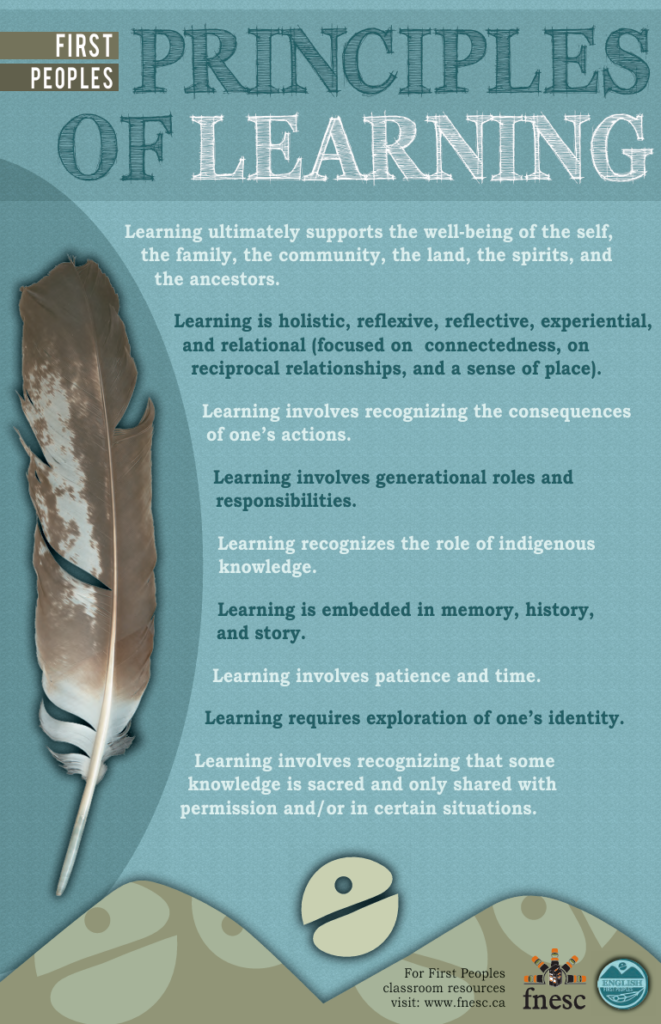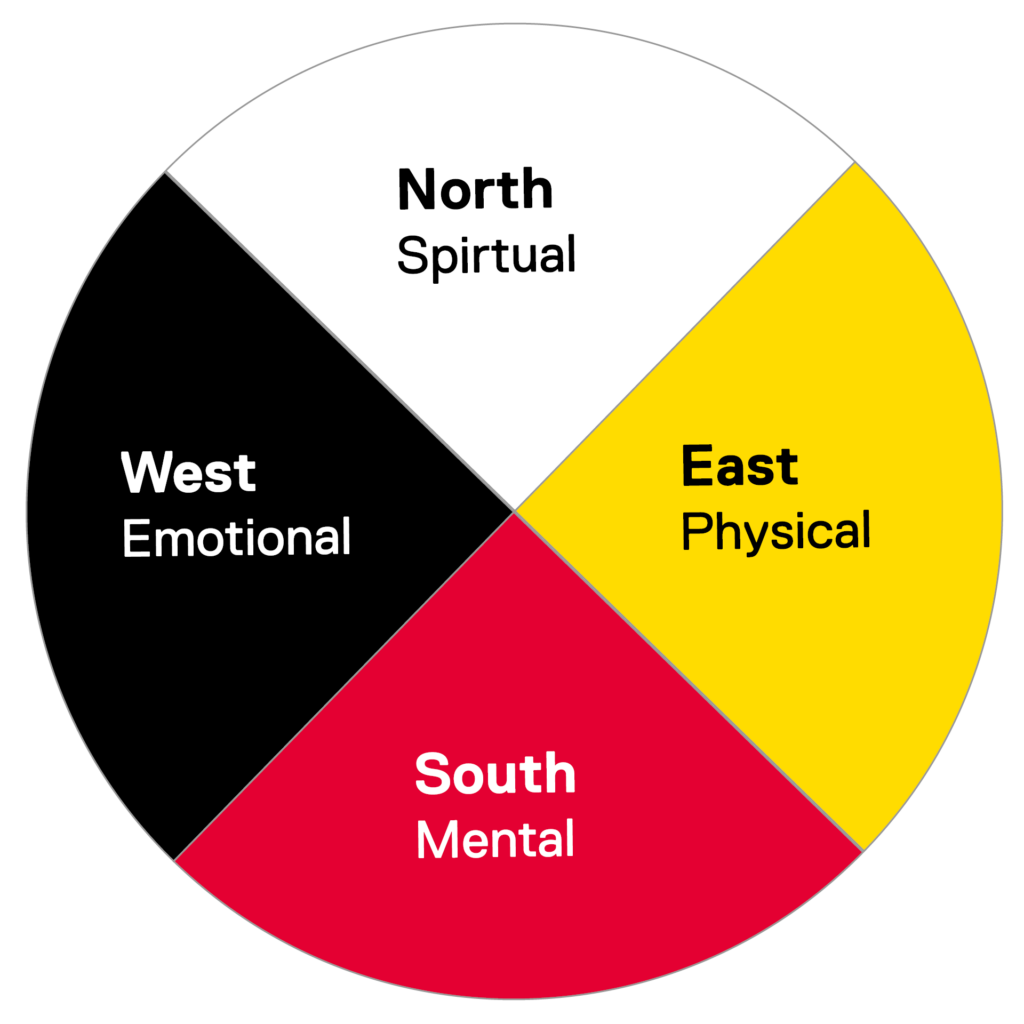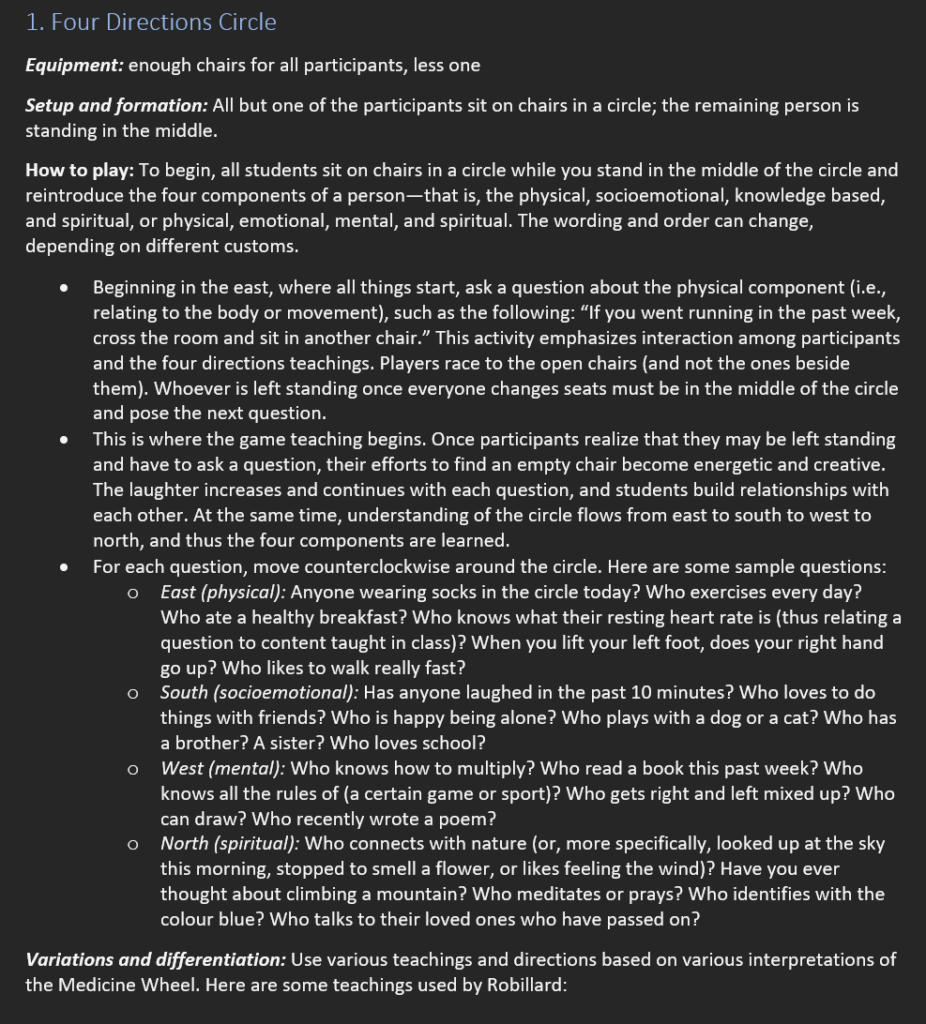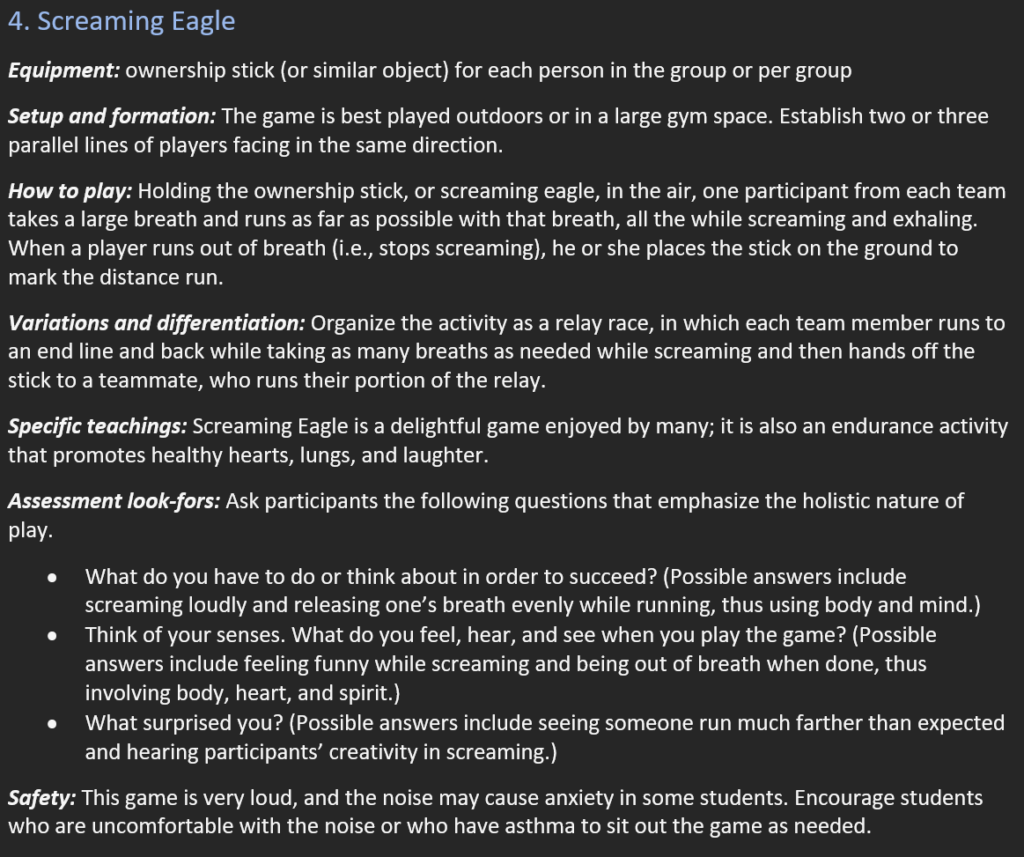And we’re back for another post from PE is the new Math. Today, we’re touching on a hot topic in the world of education: incorporating First Peoples learning principles in the classroom. Specifically, how do we incorporate an indigenous perspective in PE class? This week will include how we can encourage indigenous principles in day-to-day physical and health education, as well as a few indigenous games you can play in your class (Important Note: Not all indigenous cultures and customs are versatile throughout Canada. It is important that you research the traditions of your local nation before teaching a first peoples-based lesson).

The Medicine Wheel

The first tip I offer for incorporating indigenous perspective in your classroom can be used daily. The medicine wheel (AKA. Sacred Hoop or the Wheel of Life) is an important symbol recognized by many indigenous tribes throughout North America. It signifies the cyclical and the interconnectedness of all things. Recognizing this interconnectedness helps us to strive for a good life for ourselves, our families, and all people (Manitoba First Nations Resources 2008 p.111). Each section of the medicine wheel represents a direction – North, West, South, East – and each state of being – mental, spiritual, physical, emotional. The importance of the circle is that all 4 quadrants have to be balanced and fulfilled to produce a happy and healthy life. What is interesting to me about the use of the medicine wheel in regards to exercise and health is the emphasis placed on the mind-body connection. In his book Spark, Dr. John J. Ratey speaks about this mind-body connection like it is a brand new invention, and in the world of the western science he speaks to it is! However, the medicine wheel provides direct evidence that this important practice that the colonial races of North America are just now realizing, has been a traditional practice of indigenous cultures across North America for centuries. So how do we bring this into the classroom? In his text, Physical and Health Education in Canada, Joe Barrett, suggests using this tool as a way of fostering self awareness in your students every day. Ask students how they feel they participated in each quadrant based on the given activity for that day. You can do this in groups, having each student mark on a scale of 1 to 10 on a white board, or individually by having each student mark how they feel on a paper handout. This simple mindful practice/assessment tool can be practiced daily. Make sure to discuss with your class the important significance of the medicine wheel, maybe even have a local elder come into your class to talk about it.

Indigenous Games
Below you will find two lesson plans for indigenous games sourced from the Physical and Health Education In Canada web resource. These activities are inspired by Blair Robillard, author of Kihcite Metawewina: Playing with a Great Heart, a collection for traditional and contemporary games played across Turtle Island.



School Wide Initiatives
In June of 2023, the Ktunaxa Nation and the College of the Rockies held a day of traditional sports. This initiative brought together folks of all backgrounds to compete in a fun and friendly environment and learn about the local knowledge and culture of the Ktunaxa people. Traditionally, games were used as ways of teaching survival and life skills. Now, these games are still played by the Ktunaxa people as a means of reconnecting with their culture. This Initiative could easily be recreated in your own school. June is the perfect month to do it as it is indigenous history month, but any time is a good time to incorporate culture into your classroom and school. Consider reaching out to your local nation or band and get in contact with local knowledge keepers and elders. Organize a day or half-day with your principle when you can have that elder attend your school, bring any required equipment, and teach staff and students in your school about significant indigenous games relevant to their culture.